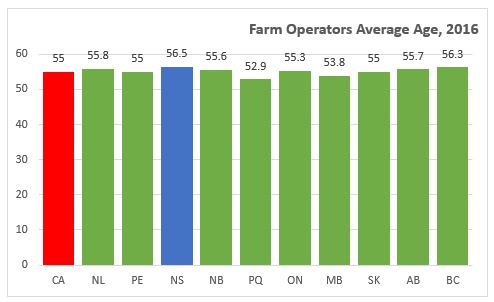The Economics and Statistics Division maintains archives of previous publications for accountability purposes, but makes no updates to keep these documents current with the latest data revisions from Statistics Canada. As a result, information in older documents may not be accurate. Please exercise caution when referring to older documents. For the latest information and historical data, please contact the individual listed to the right.
<--- Return to Archive
For additional information relating to this article, please contact:
May 10, 2017CENSUS 2016 AGRICULTURE Today, Statistics Canada released results from the 2016 Census of Agriculture which tracks changes in crops and livestock, farming practices and mechanization, and the demographics of farm operators.
In Canada, there were 193,492 farms in 2016, down 5.9 per cent in 2011. This was the lowest rate of decline in 20 years. Ontario with 49,600 farms accounted for 25 per cent of farms, followed by Alberta (21%) and Saskatchewan (8%). There were 3,478 farms in Nova Scotia in 2016 compared to 3,905 in 2011. Nova Scotia accounted for 2 per cent of farms in Canada in 2016.

Total farm acres decreased 0.9 per cent between 2016 and 2011 in Canada while the area dedicated to crop land rose 6.9 per cent to 93.4 million acres as land flooded during the 2011 Census was brought back into production, use of summer fallow decreased and marginal land was converted. The average area per farm increased in Canada from 779 acres in 2011 to 820 in 2016. The prairie provinces had higher average acres than the other provinces. Total acres in Nova Scotia declined 10.1 per cent between 2011 and 2016 and cropland acres declined by 4.8 per cent to 267,447 acres. The average area for Nova Scotia farms increased from 261 acres in 2011 to 263 acres in 2016.

The distribution of cropland in Nova Scotia shifted away from hay towards field crops between 2011 and 2016 due to fewer cattle and increased profitability of field crops. Corn accounted for largest field crop area with 31,489 acres and growth of 30.0 per cent since 2011. The share of acres for fruits, berries and nuts declined from 18.7 per cent to 18.3 per cent. Statistics Canada noted that the area for blueberries (41,963 acres) declined as a result of competitive pressures while the area for apples (4,418 acres) declined in part due to the presence of fire blight in 2014. Since 2011, acres for vegetables decreased 14.0 per cent in Nova Scotia to 5,819 acres.

Fruit and nut type operations account for around a quarter of farms in Nova Scotia with 890 operations. Beef and Dairy operations account for 19.4 per cent and other animal production accounted for 12.5 per cent of total farms. Statistics Canada noted that beef cattle declined 13.4 per cent to 24,996 head as some produces sold stock to take advantage of higher prices or shift to other types of production. Dairy cows decreased 4.4 per cent from 2011 while milk production rose 11.2 per cent due to higher production per animal. Mink stocks declined 40.5 per cent from 2011 to 252,871 but Nova Scotia continues to have the largest breeding stock of mink in Canada.

Nova Scotia reported 4,630 farm operators in 2016. The average age of farm operators increased in Nova Scotia from 55.4 year in 2011 to 56.5 years in 2016. In 2016, 58.8 per cent of Nova Scotia farm operators were over the age of 55, an increase from 53.9 per cent in 2011. The share of farm operators under 35 years of age increased from 6.1 per cent to 6.9 per cent while the share of those 35 to 54 years of age declined from 40 per cent to 34.3 per cent. Women accounted for 27.3 per cent of farm operators in 2016, up from 25.9 per cent in 2011.

2016 Census of Agriculture
<--- Return to Archive